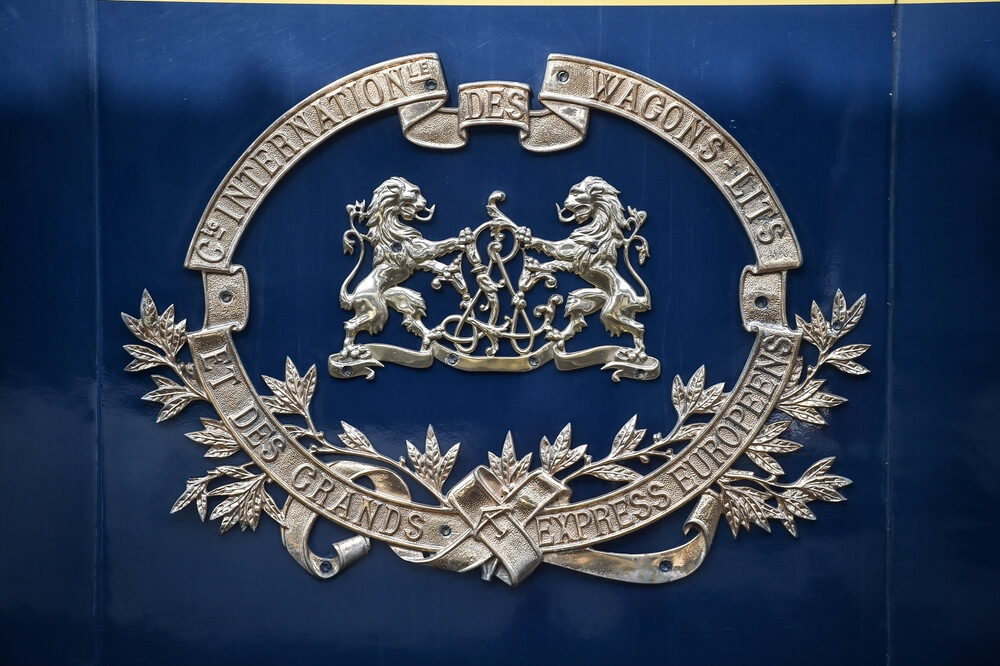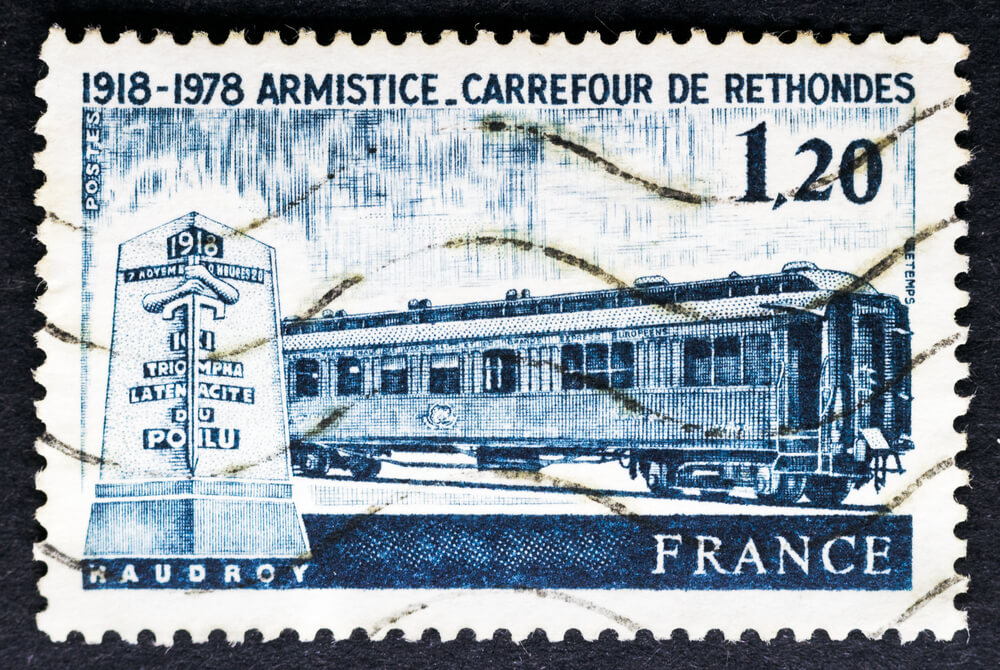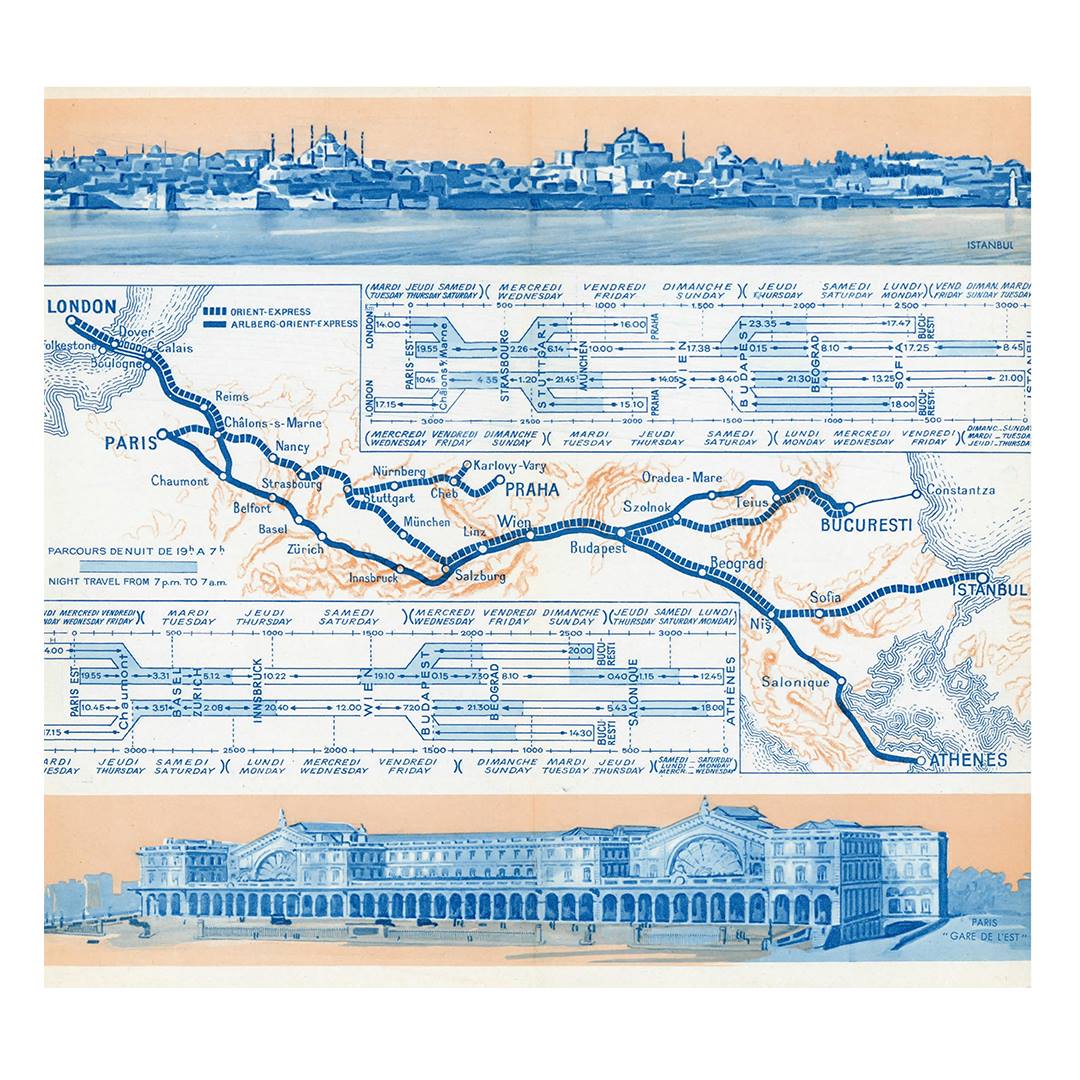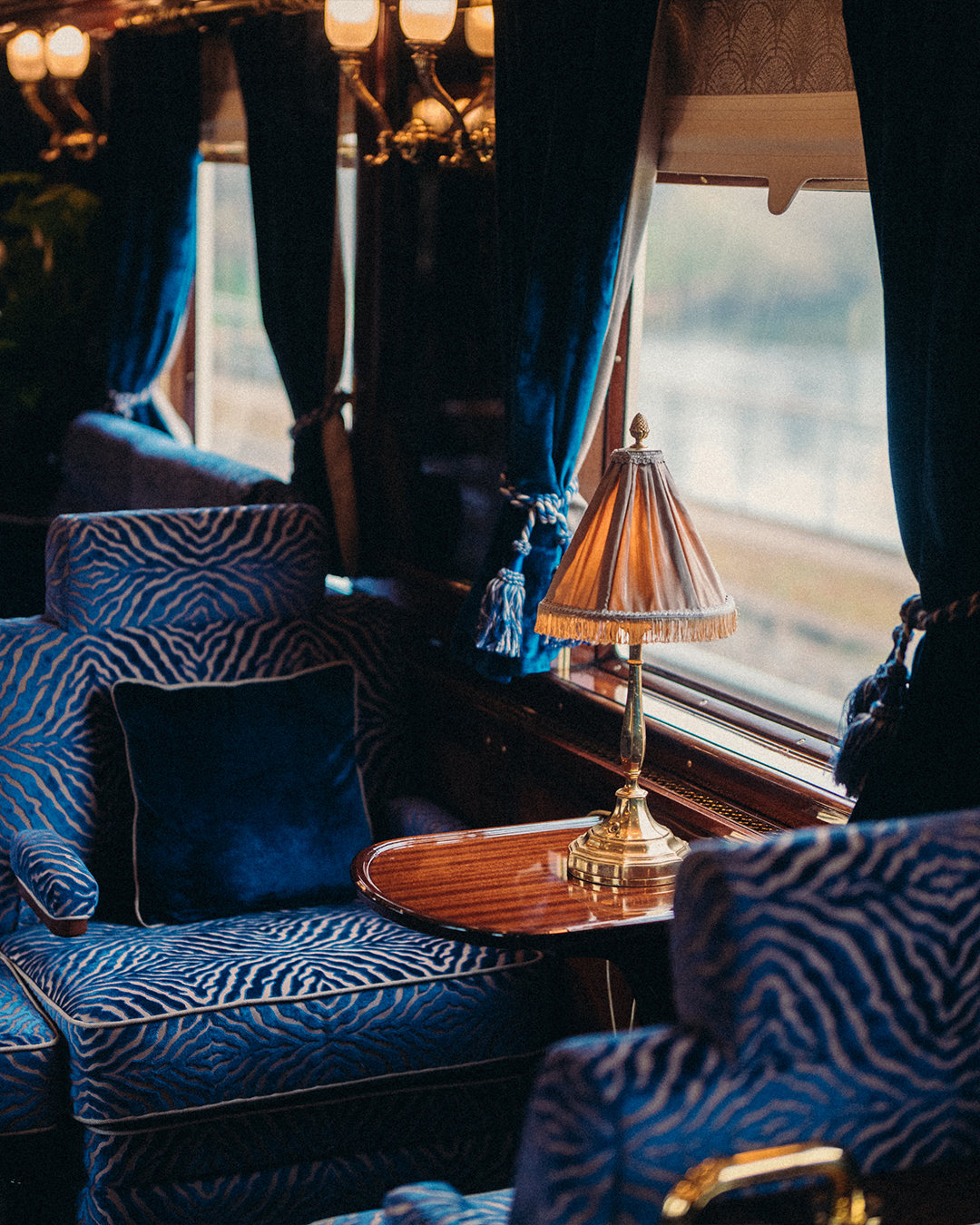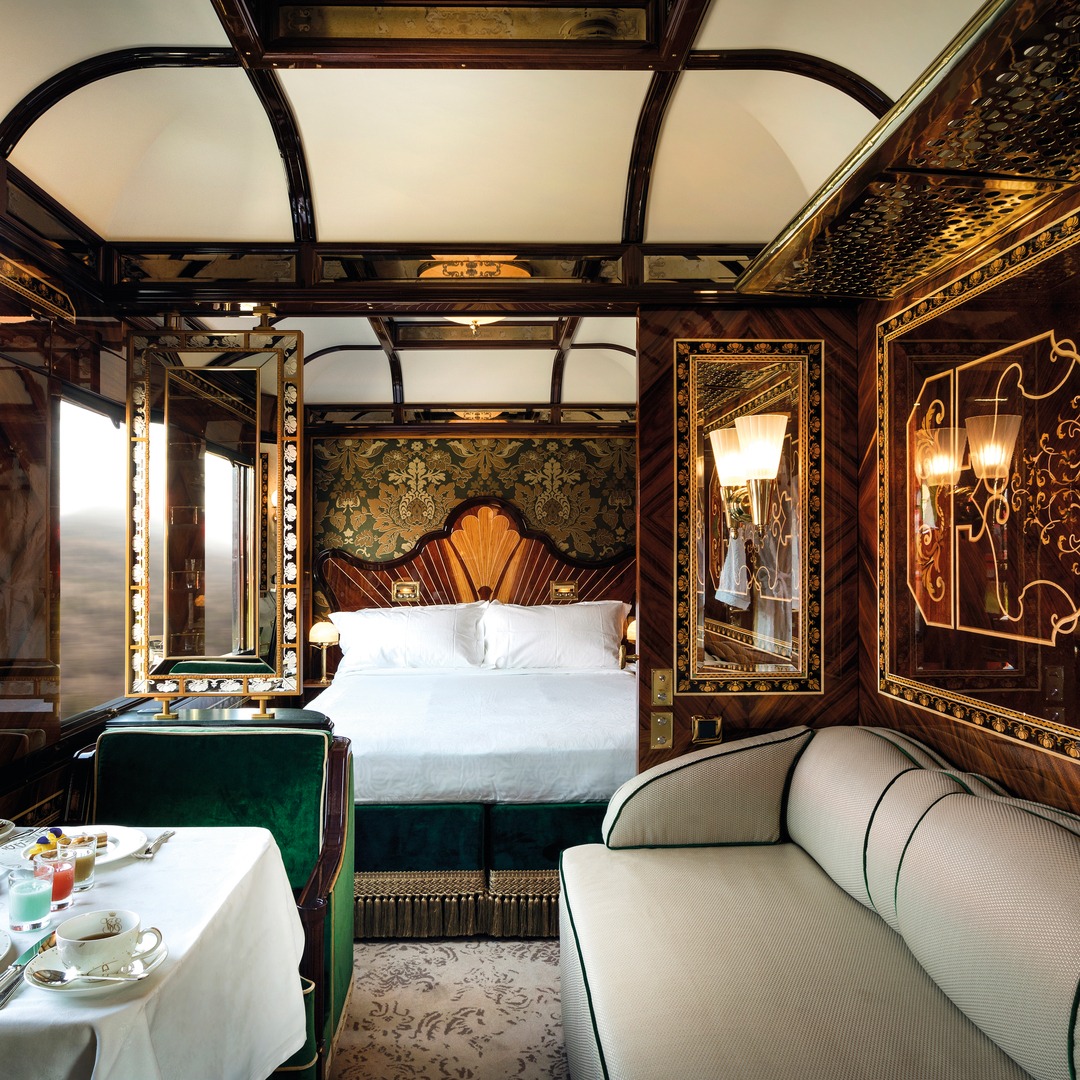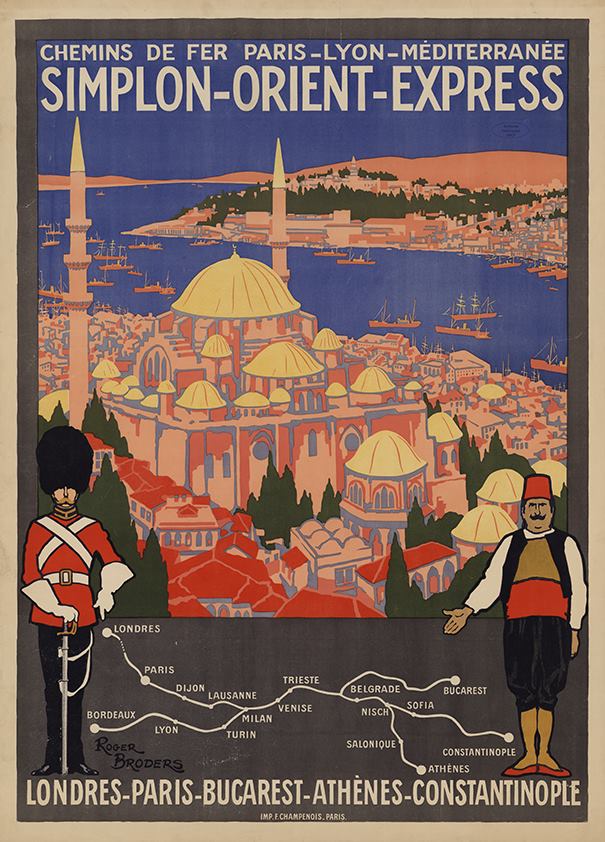How do you travel aboard the legendary Orient Express?
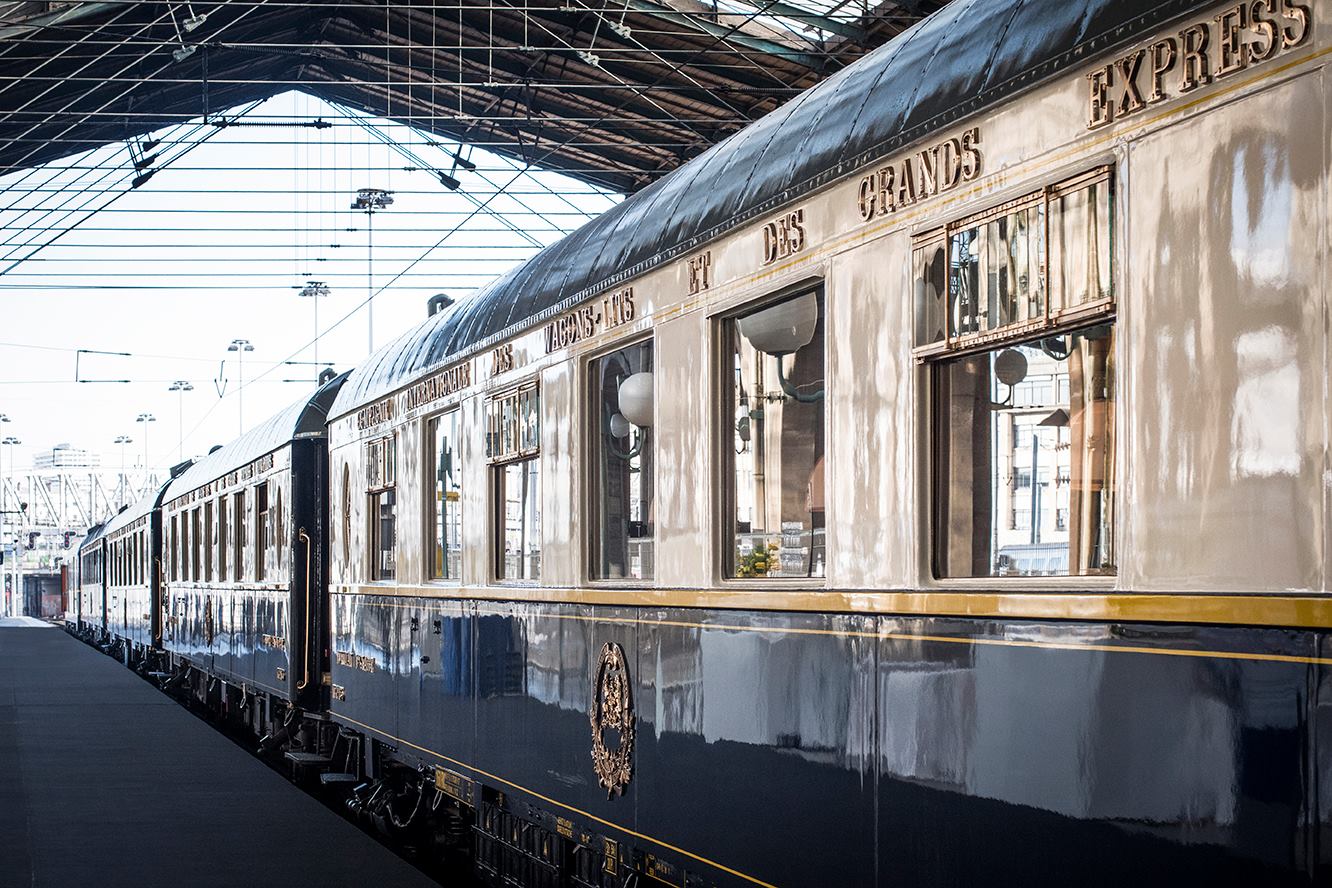
We all have images of the legendary Orient-Express in our heads. It’s easy to imagine the well-dressed passengers, the breathtaking scenery streaming past the windows, the fine food on offer in the restaurant carriage and the hushed atmosphere that reigns there.
If you thought that travelling on the Orient-Express was reserved for characters from Agatha Christie’s novels, or at least from a bygone era, think again: you can now relive the experience on board the world’s most famous train!
So yes, we’re not going to lie, it’s a budget! The Orient-Express is one of those luxury trains whose name rhymes with class, luxury and voluptuousness. It’s a bit like the Titanic of the rails, but with a less tragic fate.
Here’s a short summary of everything you always wanted to know about the Orient-Express!
Travelling on the Orient-Express
The birth of a myth:
The idea of creating luxury trains came from a young Belgian engineer, Georges Nagelmackers, who, during a trip to the United States, experimented with the Pullman sleeping cars. He found them super-efficient, but so uncomfortable that he thought there was a niche to be found in luxury travel. And it worked!
In 1872, he founded the Sleeping Car Company, specialising in rail tourist services such as sleeping cars and couchettes, on-board catering, bar cars, etc. (the company still manages catering on TGVs as well as on Italian and Austrian trains!)
Initially, the CWL only installed these carriages at the rear of existing trains. Then, in October 1882, it launched its first train between Paris and Vienna, the Train Éclair!
Given the success of this luxury line, Georges Nagelmackers decided to extend the line to Constantinople! At the time, the Ottoman Empire was one of the most powerful in the world and fascinated Europeans!
On 4 October 1883 at 7.30pm, the Orient-Express left Strasbourg station in Paris (now Gare de l’Est) and arrived in Constantinople (now Istanbul, if you were in any doubt) 4 days later, compared with two weeks by boat! The notion of long-distance travel was completely turned upside down, as was the geography of Europe, which was now crossed non-stop at the borders! In fact, it was the company that managed all the customs formalities upstream! Unheard of!
Tickets cost 700 gold francs, half the annual salary of a skilled worker.
In 1889, the train connection became direct with the construction of the last missing section, replacing the crossing of the Danube which until then had been done by ferry.
Technological prowess:
Photo Orient Express Facebook page
As soon as it opened, it was dubbed the train of kings and the king of trains. Its cabins were equipped with everything that was best at the time: central heating, hot water, gas lighting, and so on. The same applied to the decor: silk sheets, marble bathrooms, crystal goblets and silver cutlery. In the 1920s, the interior decoration was left to the care of renowned art deco artists. The train was adorned with precious wood marquetry and sumptuous glass panels, becoming a showcase for Art Deco.
Robbery and cholera:
The risk with flaunting wealth is, of course, that it attracts highwaymen! In fact, when the Orient-Express first travelled, travellers were advised to be armed! But in 1891, the train was attacked and robbed! The robbers made off with an estimated £120,000 and 5 passengers as hostages!
The following year, a cholera epidemic forced the train into quarantine!
The Armistice carriage!
During the First World War, the wagons in the German and Austro-Hungarian empires were requisitioned to create their own sleeping car companies. In the West, the wagons were transformed into field ambulances. The fate of this international train was debated at the Treaty of Versailles in 1919.
But if there is one Orient-Express carriage that will go down in history, it is carriage n°2904, built in 1913!
You’ll remember that the Armistice was signed in a carriage by General Foch, in the middle of nowhere (sorry, in the clearing at Rethondes in the middle of the forest at Compiègne!), but this is our former luxury carriage, transformed for the occasion into the office where the historic Armistice between France and Germany was signed on 11 November 1918.
The Compagnie des wagons-lits donated the wagon to the French government in 1921. Unfortunately, you can’t see it today. It was on display for a long time, but was destroyed by the SS on Hitler’s orders, a month before the German capitulation in 1945.
A star-studded line-up:
If the myth has spread so quickly, it’s also thanks to the personalities who have travelled on the Orient-Express!
Here are just a few of them: King Ferdinand of Bulgaria, Leo Tolstoy, Marlene Dietrich, Coco Chanel, Ernest Hemingway, Lawrence of Arabia, Jean Cocteau, Albert Einstein, Sigmund Freud, the spy Mata-Hari and, of course, Agatha Christie, who made a major contribution to publicity for the train by writing her famous novel.
Crime on the Orient Express
Photo Orient Express Facebook page
In 1934, Agatha Christie published what was to become her most famous novel: Murder on the Orient Express. First of all, there were never any murders on board!
The English novelist was inspired by a real crime: the Lindbergh baby affair, which shook the international press at the beginning of the 20th century, following the kidnapping and murder of the son of the famous aviator Charles Lindbergh. It was in the wake of this crime that the US Congress declared the kidnapping a federal crime.
In short, Agatha stages the murder of the child’s killer, during his journey under an assumed name on the Orient Express, which is stuck in a blizzard lasting more than 6 days in Turkey (which, incidentally, actually happened in February 1929).
The novel was a success, translated into more than 30 languages and adapted into a radio series, then into films and even comic strips and video games!
It contributed greatly to the collective memory of the Orient Express, adding a good dose of mystery.
The heyday of the Orient Express
Photo Orient Express Facebook page
The period between the wars marked the rebirth and golden age of the Orient Express.
In 1919, after the First World War, it was no longer possible to cross Germany. But it took more than that to destabilise the king of trains! From then on, the Orient-Express would travel through the Simplon tunnel, dug under the Alps in 1906. At the time, it was the longest tunnel in the world! Paris now linked Istanbul via Milan and Venice – a technological feat! It was decked out in new night-blue carriages for the occasion!
This was the birth of the first Simplon-Orient-Express train and the opening of a historic route through the Alps. The train now took just 2 and a half days to reach Constantinople!
Other lines were then created, and by the 1930s you had three options:
- The classic Orient-Express, which finally got back on track and ran: London-Calais-Paris-Strasbourg-Munich-Vienna-Budapest-Bucharest-Istanbul
- The all-newArlberg-Orient-Express, which passes through Switzerland on its way to : London-Calais-Paris-Zurich-Innsbruck before reaching Vienna and finishing on the usual route.
- The Simplon-Orient-Express on the route to the South: London – Calais – Paris – Lausanne – Milan – Venice – Belgrade – Sofia and Istanbul.
It’s enough to make you want to travel the world!
From travel revolution to decline
The Second World War was going to be a different kettle of fish! The bombings rendered many stations, bridges and railways unusable. What’s more, many cars were destroyed! And on top of the material damage, you can add the tense geopolitics! It’s the Cold War, of course, and this new world cut in two that doesn’t want to hear from its neighbour! Border controls in Eastern Europe gradually led to the Orient Express losing its reputation as an express, even though it was the only train in the world that could cross the Berlin Wall!
What’s more, its commercial speed of just 55 km/h was no match for the modern world! Not to mention the catastrophic state of the networkand the democratisation of air travel!
The Orient-Express therefore made its last journey on 20 May 1977. However, night trains continued to run between Paris and Vienna until 2009.
Bringing the Orient-Express epic back to life
Photo Orient Express Facebook page
The dream of travelling on the Orient-Express has not gone away! In 1982, an American entrepreneur, James Sherwood, bought 18 old CWL cars and restored them with great care! His wife thought he was mad, but he brought the project to fruition at a cost of over 80 million dollars!
A new luxury train, branded the Venice-Simplon-Orient-Express, took over this legendary crossing. If it has to bear this long name, it’s because the “Orient Express” brand belongs to the SNCF! Be that as it may, the Art Deco style is back and proper dress is required for lucky passengers!
The company operating the line today is Belmond, the British luxury giant, which will be acquired in 2019 by LVMH (the French Moët Hennessy Louis Vuitton group).
In 2011, the SNCF also bought 7 original carriages from the Sleeping Car Company. As owner of the famous brand, it is taking advantage of the opportunity to create a new company called Orient-Express. The idea, of course, was to relaunch the prestigious train line by combining emblematic art deco and period craftsmanship with modern comfort and the latest technology!
In 2017, the AccordHôtel group joined forces with the Orient-Express company and split its shares 50/50 with the SNCF. This will enable it to develop a whole range of hotels under the Orient-Express brand, positioning itself in the luxury hotel sector.
The Orient-Express at home!
In 2021, the very young Orient-Express company has decided to keep you waiting by launching its collection of travel products under the name “Steam Dream“! 18 designers and craftsmen have been brought together to bring you the magic of travelling in the famous sleeper trains across Europe, with 5-star bedding, fine porcelain, luxury leather goods and board games – you get the idea!
The Orient-Express of tomorrow… And the others…
The French company Orient-Express has made its dream come true. Between now and 2024, the Dolce Vita Orient-Express will be running 6 trains along Italy’s legendary routes. A new train has been created by the Dimorestudio architecture and design studio to make you relive this ultimate experience as if it had never ceased to exist!
Other companies have followed suit, wishing to ride the wave of great epics on luxury trains. One example is the Puy du Fou, which is launching a show train across France in 6 days and 11 stops at some of the country’s most emblematic sites.
Start-up Midnight Trains, on the other hand, is particularly interested in the ecological impact, pointing out that you would have to make 50 return journeys from Paris to Rome by train to emit the same amount of CO2 as a flight from Paris to Rome. Not to mention the pleasant, relaxing experience on offer, avoiding the stress of the airport.
Photo Facebook Page Midnight Trains
At a time when we are being asked to return to more planet-friendly modes of transport, it would seem that long-distance rail travel is making a comeback!
How much does it cost?
Yes, that’s all well and good, but you have to admit that it’s an experience reserved for the more affluent among us. Of course, it all depends on your final destination and your travel dates, but to give you an idea of what to expect, let’s take a quick look at the different offers on the market.
- With Compagnie Belmont: You can take the Venice-Simplon-Orient Express. For 2D/1N on board, you should expect to pay an average of €3,500 per person. For a 5d/4n return trip from Paris to Prague, you should allow €5,600 per person.
- With the Dolce Vita Italy, you will need to spend around €2,000 per person per night.
- Prices for the Puy du Fou show train start at €4900 per person.
- Midnight Trains, for its part, remains mysterious and has not yet revealed its prices. Stay tuned!
To recap… 8 points to understand
Photo Page Facebook Orient Express
- The Orient Express was invented by Georges Nagelmackers, founder of the Compagnie des Wagons Lits (CWL).
- This luxury train operated from 1882 to 1977, with ups and downs due to world conflicts.
- At its peak, the Orient-Express ran on three routes across Europe.
- Today it no longer exists!
- A private luxury company, Belmond, has bought and renovated old carriages and revived the Venice-Simplon-Orient-Express line.
- The SNCF owns the Orient-Express brand and has created a new company under the same name.
- The new Orient-Express company will unveil its first trains across Italy from 2024, the Dolce Vita Orient-Express.
- Other companies are now offering experience trips on luxury trains.
Whatever the destination, here it’s the journey that counts
Travelling on the Orient-Express is above all an experience! It’s not so much the destination on arrival that’s at stake here, but what you experience to get there.
In this fast-paced world, where we want to get there before we’ve even left, we often forget that the journey is an integral part of the journey, and that’s what these train journeys try to remind us of.
200 audioguided tours for cities all around the world
Download